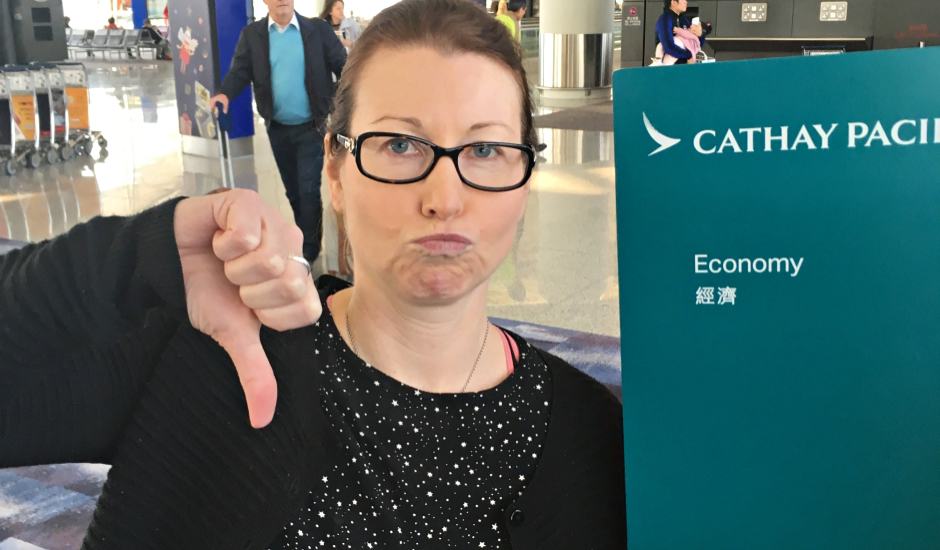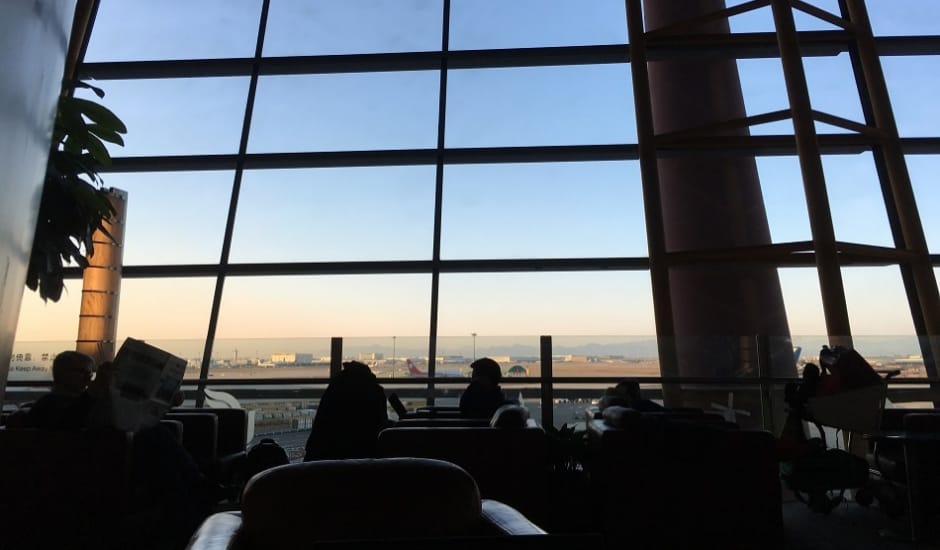Day Zero
We arrived in Xi’an late after our flight was delayed from Beijing. We hadn’t organised a transfer to the hotel, so elected to catch a cab from the rank. We had heard that taxi drivers out of the main cities probably wouldn’t know English, but since we were staying at the Sheraton, we assumed that the drivers would know how to get there.
The driver was all smiles and nods when we asked if he knew where the Sheraton was and even said the hotel name back to us, so no red flags there, and we headed off.
The driver didn’t turn the meter on and when we pointed to it and tried to get him to turn it on, he dialled his dispatch and passed us the phone. We told the guy that answered where we were heading and he told us in English it would be ¥150.
We passed the phone back to the driver and they chatted in Chinese (I can’t differentiate Mandarin from Cantonese – for all I knew it was Mongolian!) and then he hung up. Assured that the driver knew where we were going, and the price was set, we could relax.
As soon as we left the airport we pulled off the main high way and parked at a gas station. The driver motioned for us to get out of the car. Bugger that I thought and stayed put. What’s he going to do – drive off with our luggage?
The driver shrugged and started to refill the car from the LPG pump. I realised I was probably disobeying health and safety regulations – having no passengers in the car was probably a rule while refuelling. Some fellow tourists were experiencing the same situation in the taxi beside us.
I figured that the drivers probably ran the car so low on gas that they had to refuel on getting a fare otherwise they wouldn’t be able to make it back into town.
Interesting situation – did they sleep in the cabs overnight? How’d they get home? Anyway, taxi refuelled, we headed back onto the highway and towards Xi’an.
As we approached the city, I looked out the window. Whole neighbourhoods of almost finished 30+ story apartment blocks loomed above us. This was in a city which I’d been told was a “tourist town”. It turns out Xi’an has 9 million people in it and 14 million in the metropolitan area. Basically a city the size of London which had for years been the terminus for the Silk Road taking goods from Europe to Asia and back. The scale of the construction left me agape. The street lights illuminated crane after crane hovering over semi-finished uniform apartment blocks – whole city blocks neatly surrounded by construction fences. An Australian friend had been telling me that one of the reasons that they had avoided the Global Financial crisis was because of China’s unending appetite for construction – Australia provided the raw materials to fuel China’s building boom.
The construction sites gave way to the familiar built up areas of a CBD – and then we were inside the great walls into an old city – one with a thriving night life: there were people everywhere. I frowned slightly, knowing that our hotel was outside the great walls which encircled the very centre of the city.
If we’d been on the meter I would have thought this a standard taxi drivers scheme – take the tourists through a market and let the crowd delay the trip, running up the fare. The fact that we were on a set fare meant that either he didn’t know where we were going or didn’t know the best way to get there.
The driver pulled up outside a Hilton and turned to us smiling. His smile faded as our looks conveyed the fact that while, yes, it was in fact a Hilton, that wasn’t where we expected to go.
It was Ben who figured it out – “Sheraton” apparently could be confused with “Hilton” if you pronounce words as Kiwis do – without a lot of enunciation. I had the address in English in my booking confirmation but that was not going to work, so I got out my phone and with great reluctance turned on Mobile Data.
It took about two minutes to punch in the address and get the little blue dot on Google Maps, and then I handed the phone to our friend in the driver’s seat. I had to zoom in a little to let him see the Chinese characters of the street names, but he got it, and away we went.
He called dispatch on the way and the guy on the other end of the line tried to get more money out of us. We explained gently that we’d agreed the price and we weren’t to blame that they couldn’t differentiate one hotel from another.
I’m in two minds if we were in the right there. Anyway, eventually we made it to the hotel.
Day One
We had a couple of hours before our tour to the Terracotta Army, so we thought we’d head to the walls to check them out up close. The Hilton was about where the brighter yellow circle is on the map – the Sheraton we were staying was outside the West Gate towards the left hand side of the map.
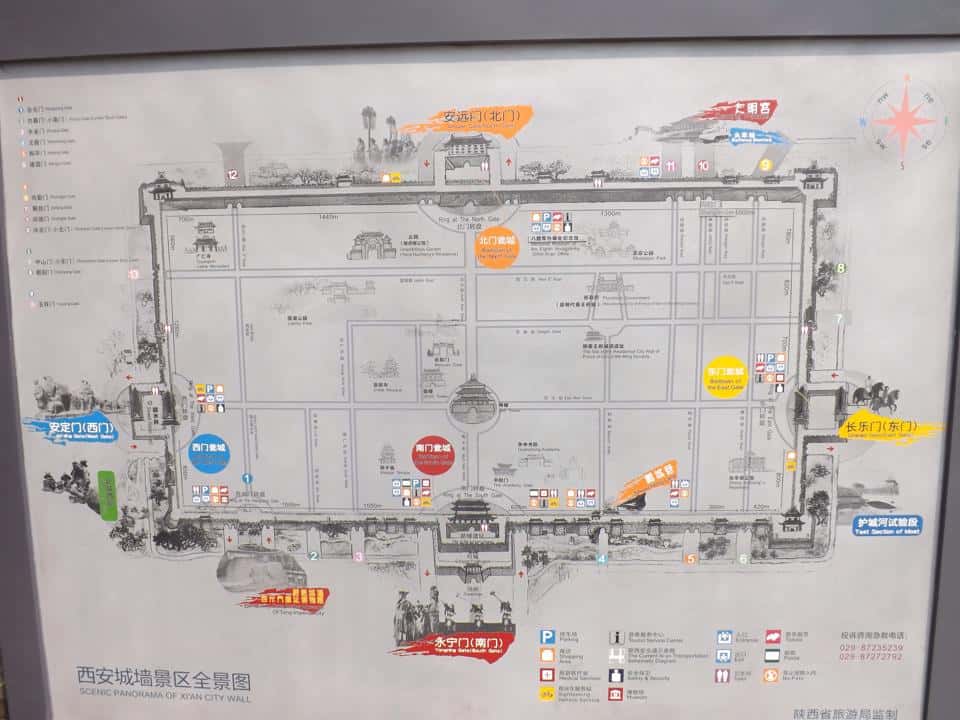
We had enough time for a quick scurry around the top of the walls – where we discovered there were bikes for hire and the walls themselves were a perfect candidate for a ride – evenly paved and very wide – much wider than the Great Wall. We made a note to come back and try to do a circumnavigation the next day before we had to go to the airport.
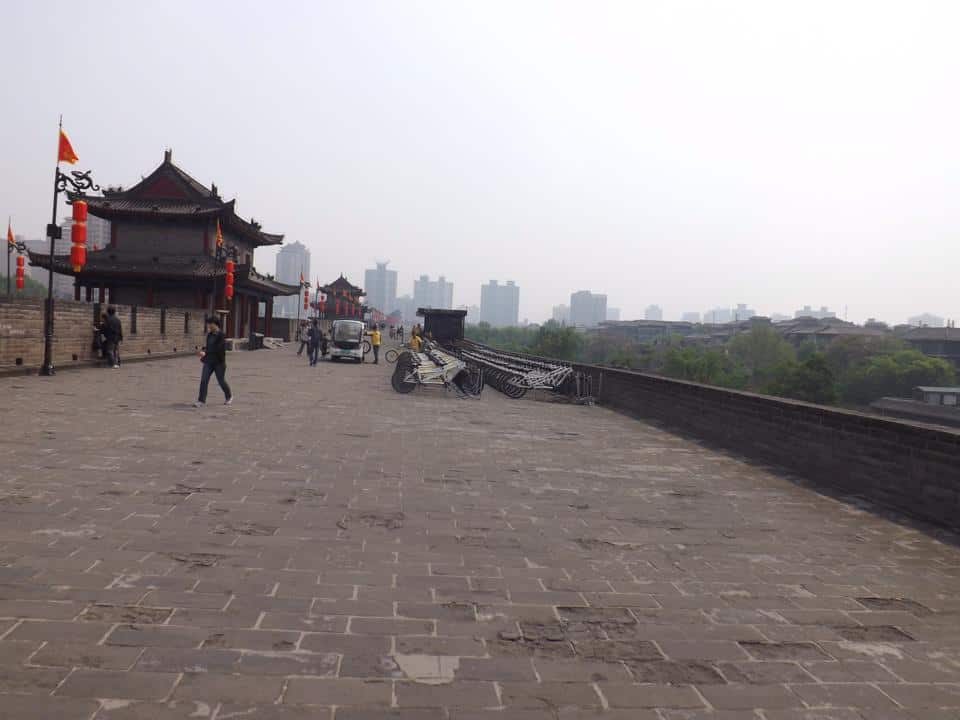
What would a tour be without the ubiquitous souvenir shop stop? In this case it was a little more defensible as it consisted of a five minute discussion on the methods used to produce the terracotta warriors, followed by a good hour in the rather cavernous shop.


The most appealing part was the terracotta bust creation – you could give them a couple of photos of yourself or a loved one and get them to make a likeness of yourself in terracotta. It takes a while to make them though, and they are expensive. I joked and said that sorted Xmas presents for the year! I actually thought they meant that you could get your head placed on a terracotta warrior’s body, but it would seem all the warriors had to follow a set pattern – the dude bowing on his knee had to all look the same etc.
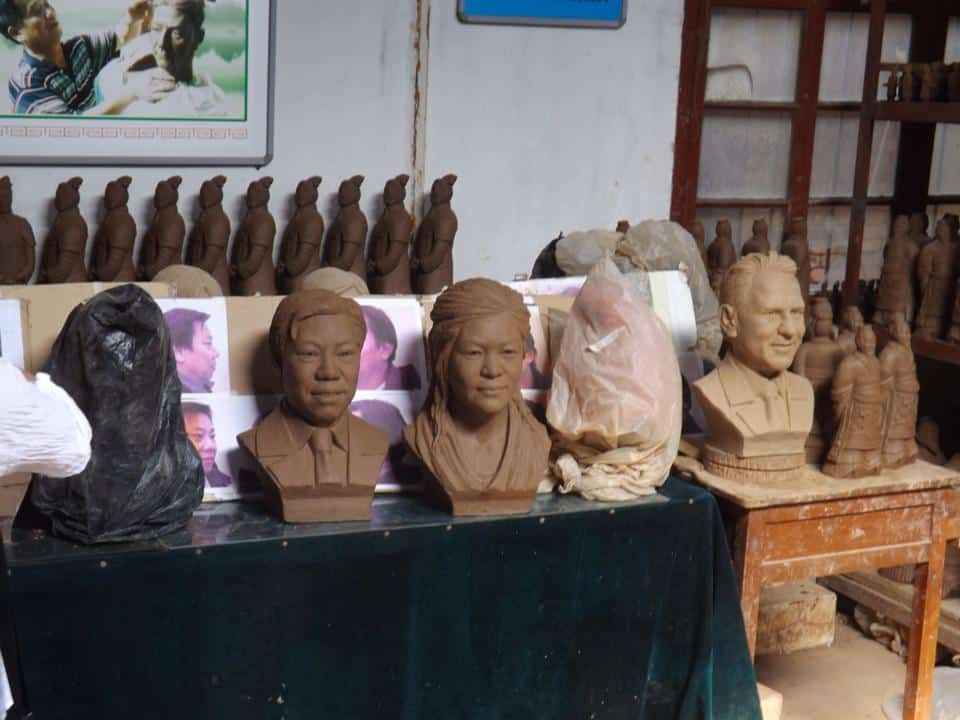
So how expensive were they? For the largest statues – about my height and twice what I weighed, the price was ¥16,500 (£2,000 or $2,400). But there was such a range to choose from in terms of size. There were only a few types of soldier to choose from though: Emperor, General, Captain, Officer, Bowman and Crossbowman.
Then on top of that you had the horses as well. The shop was huge and filled with the standard fare – rugs and silk etc. The big difference was the huge furniture section with jade figurines and expensive woods, all polished to a golden lustre.
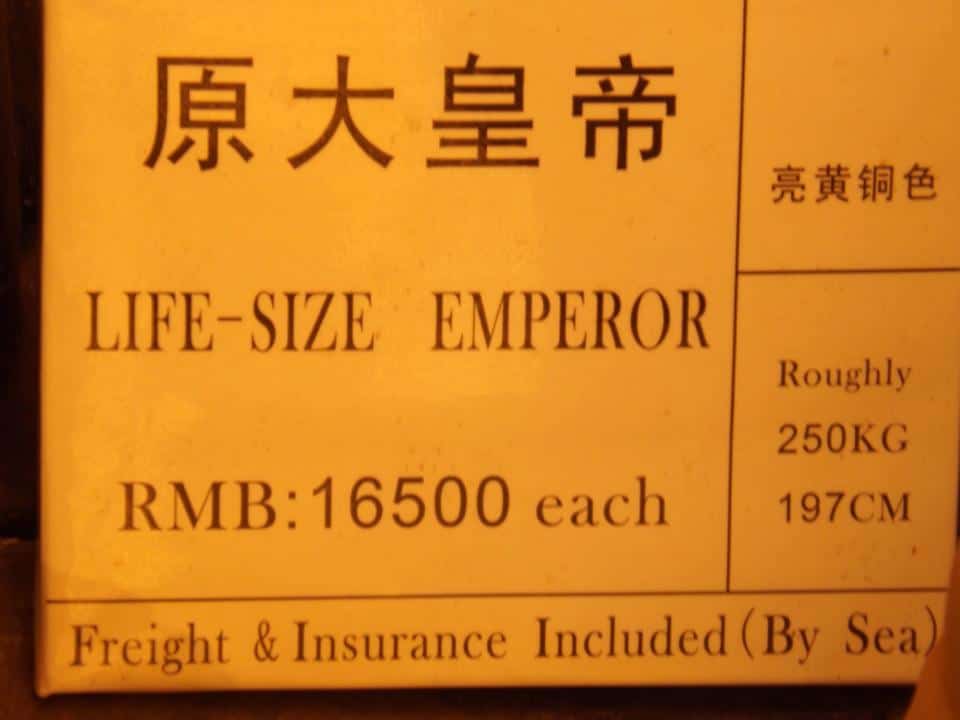
So after everyone had bought their fill of assorted figurines, it was off to the Terracotta Army – or to give it its proper name the Mausoleum of the First Qin Emperor. The car park is a bit of a trek from the actual Mausoleum – but electric carts ferried us all. I noticed that they arrived empty but left full and wonder what would cause such an imbalance of passenger numbers…


We arrive at the three Mausoleum buildings and our guide give us a really good piece of advice: the order in which you visit the buildings makes a big difference to your enjoyment of the attraction. It’s best to build up to the main building, so start at the smaller ones and work your way up. We follow her advice.
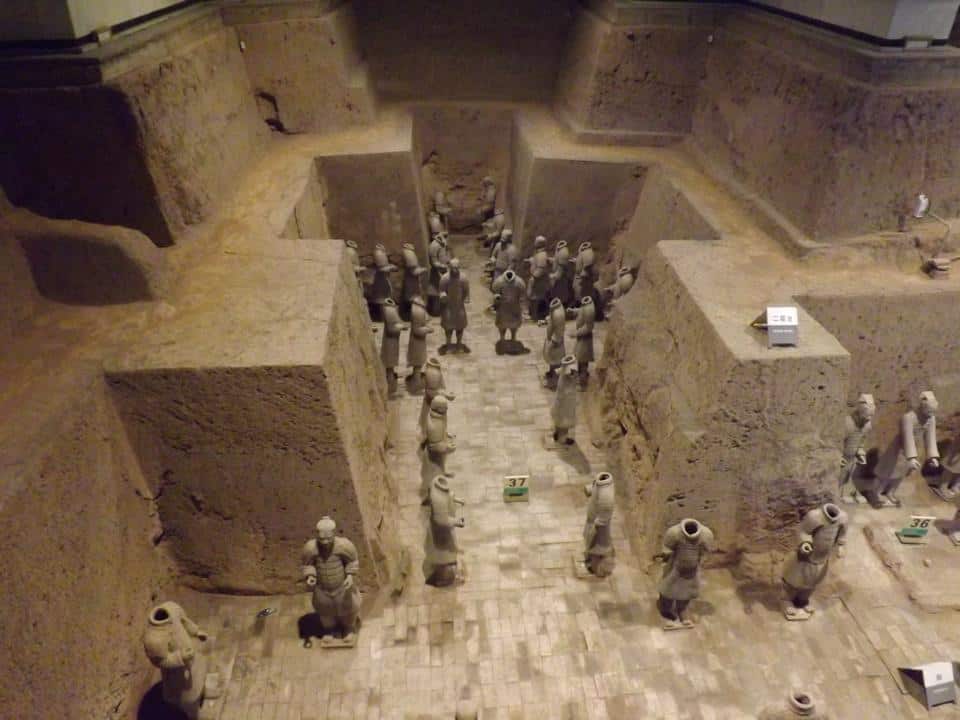
The two first buildings are pretty cool: you get to see a museum exhibit and some of the soldiers in situ. The main building is enormous – like an aircraft hangar. There are crowds of both locals and foreigners and the edges of the pit forming a natural choke point where everyone is pushed close to each other.
I feel someone opening my backpack which I was wearing on my back like a rookie traveller. I have my camera around my neck so there’s nothing in the backpack, but still I kick myself for bad travel security. Turning around quickly does nothing to identify the culprit.
So I just zip the bag back up and put it on my chest where it should have been from the get go.

The main hall is brilliant. The terracotta warriors are amazing and seeing them as they were buried gives a new perspective. The scale of them is truly appreciated only when you reach the end of the hall near the well that a farmer was building when he first discovered the terracotta warriors. He was single-handedly responsible for this whole centre of industry.
I jokingly asked our guide whether they gave him a commission on each figurine sold or every visitor and she good-naturedly assured me that in Communist China he was adequately rewarded with being able to keep his life…
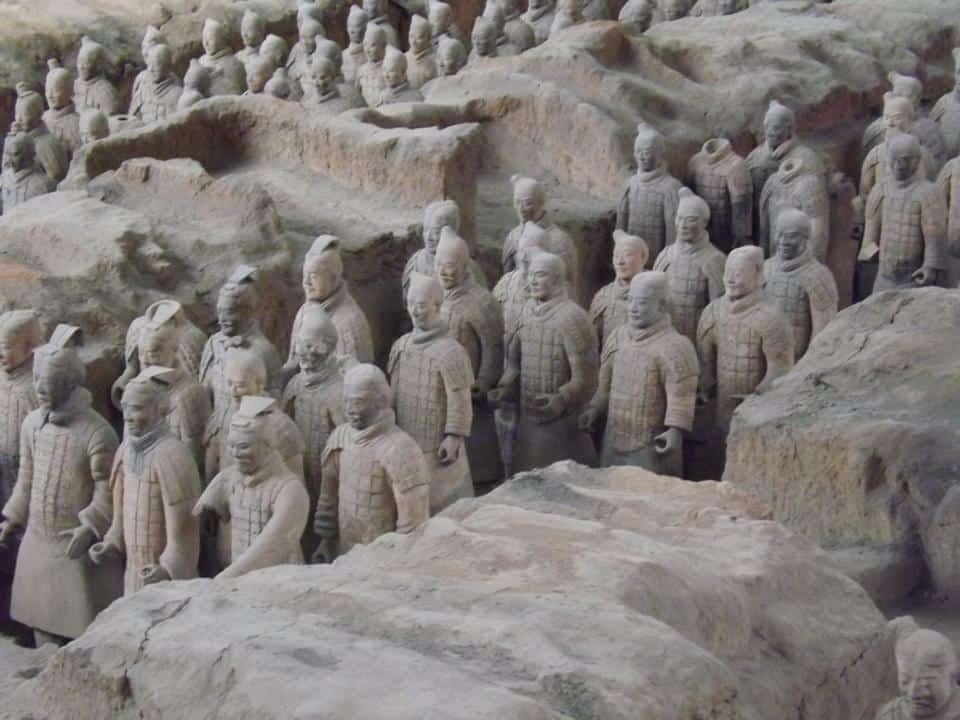
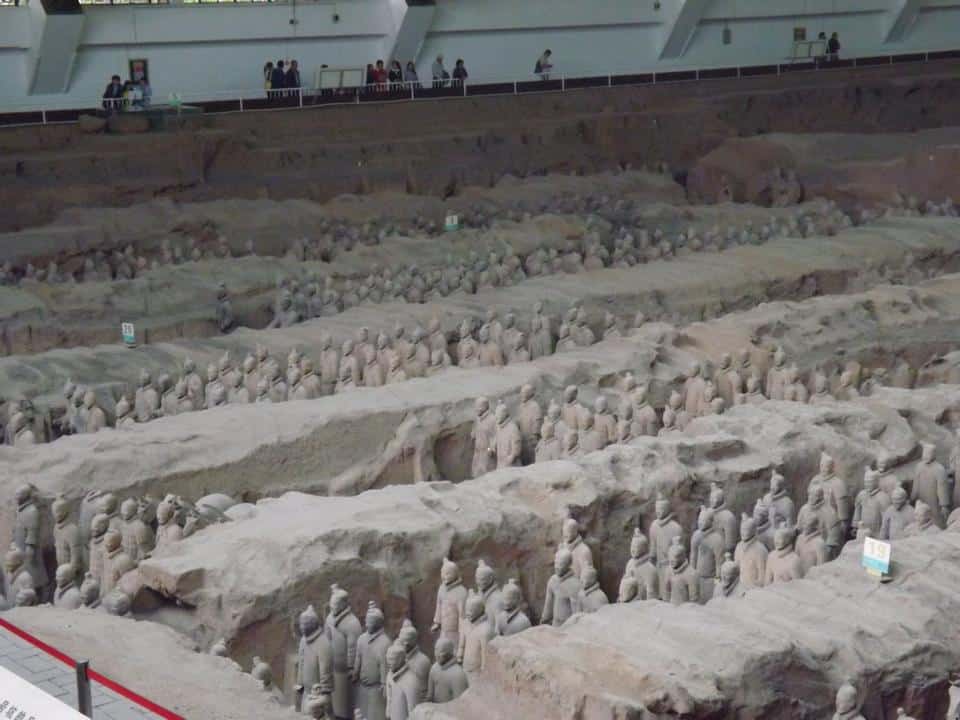

After we take in the splendour of the warriors en masse we move around the far side and come to the section where the warriors are dug out, catalogued and cleaned up. The work stations look like airport security x-ray machines.
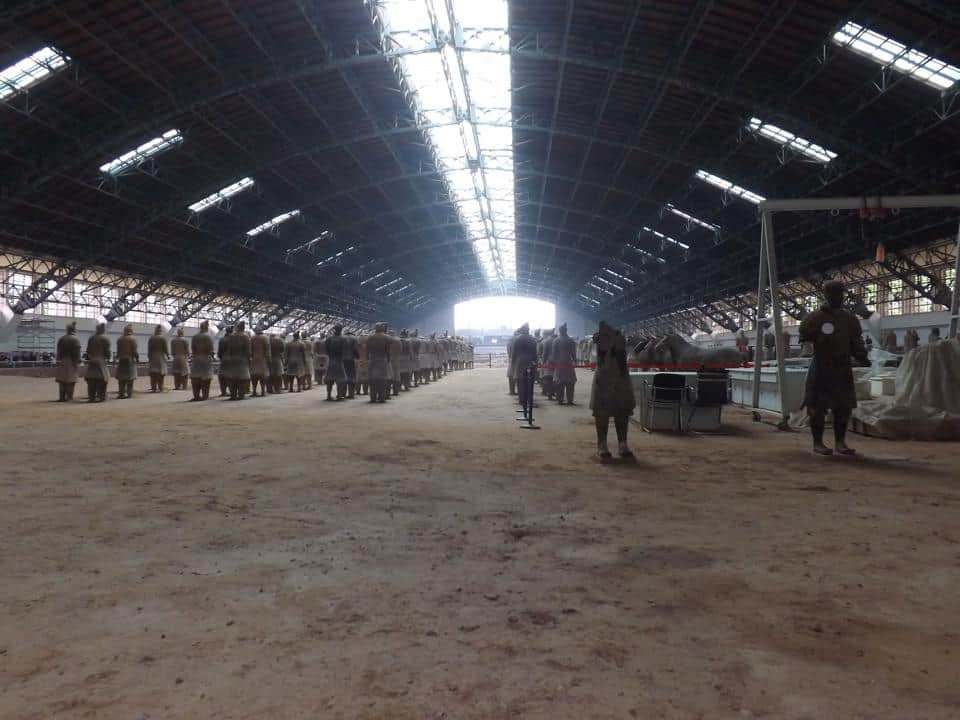
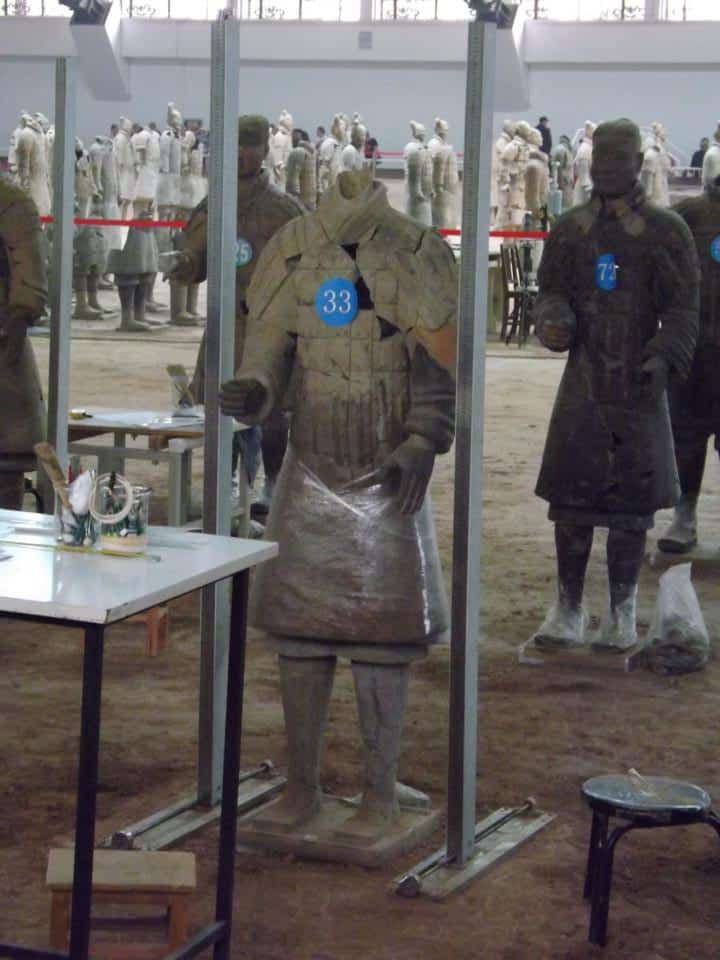
The warriors are an amazing experience and well worth the trip. Upon exiting we are funnelled out to a large street with souvenir shops and restaurants on all sides. The mercantile efforts are truly awesome.
We walk back to the carpark past the shops as the empty electric carts go along parallel to us, separated by a hedge. I guess if they were available we might miss the opportunity to spend money on the souvenirs. Couldn’t possibly have that.
After seeing how much went on the previous night on our way to the hotel, we were very keen to take in the nightlife of Xi’an and it didn’t disappoint.
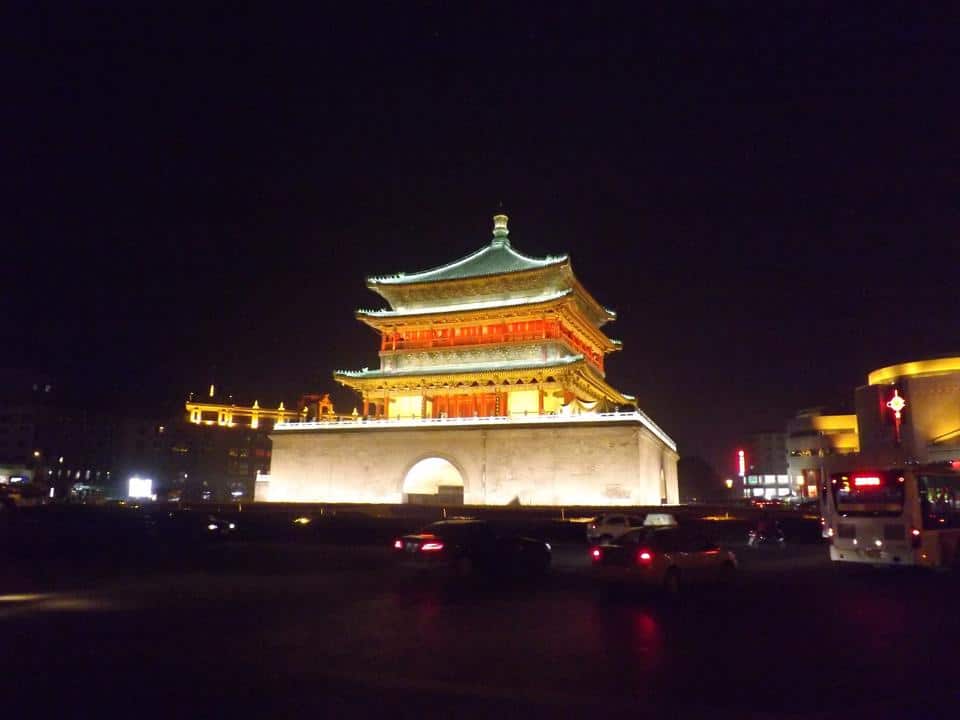
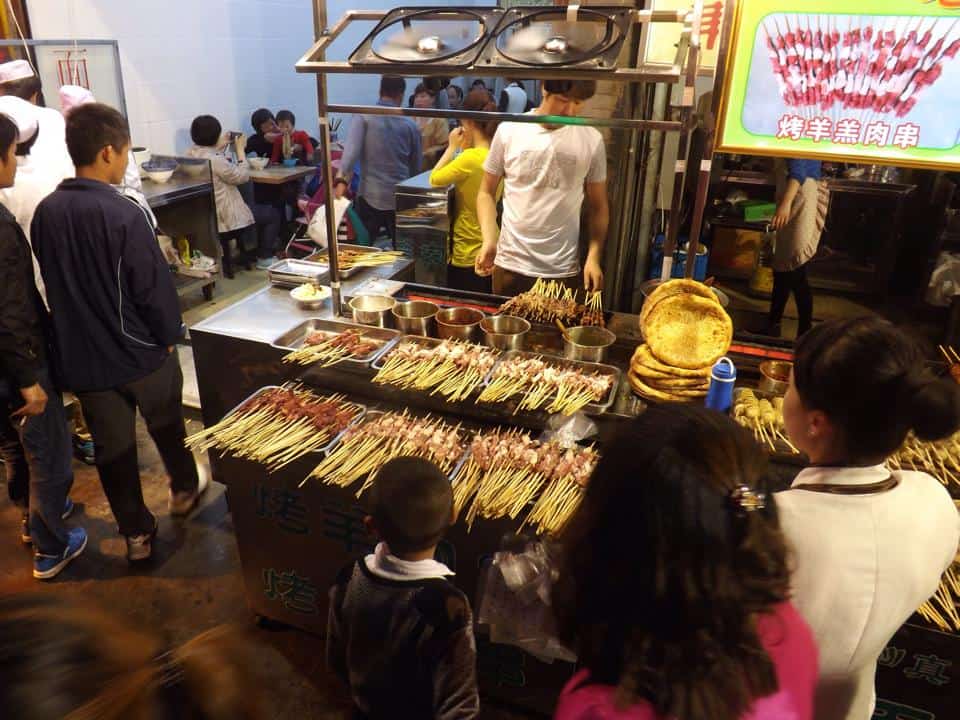
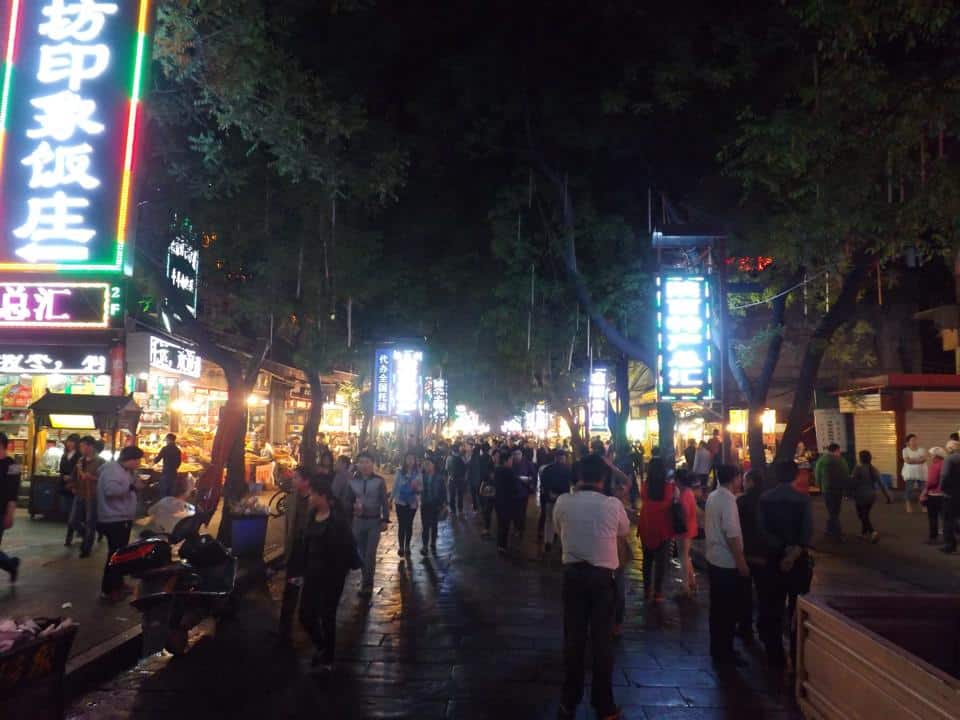

The highlight for me was a street team making a candy not too dissimilar to toffee with seeds. One guy mixed the ingredients and then placed the candy on a drum before two of them hoisted enormous mallets and proceeded to flatten the mixture, alternating so quickly that if one of them was half a second out of synch he would have lost an arm.
Ben got some and we wandered down the streets gawping at everything and chewing contentedly. Very more-ish.
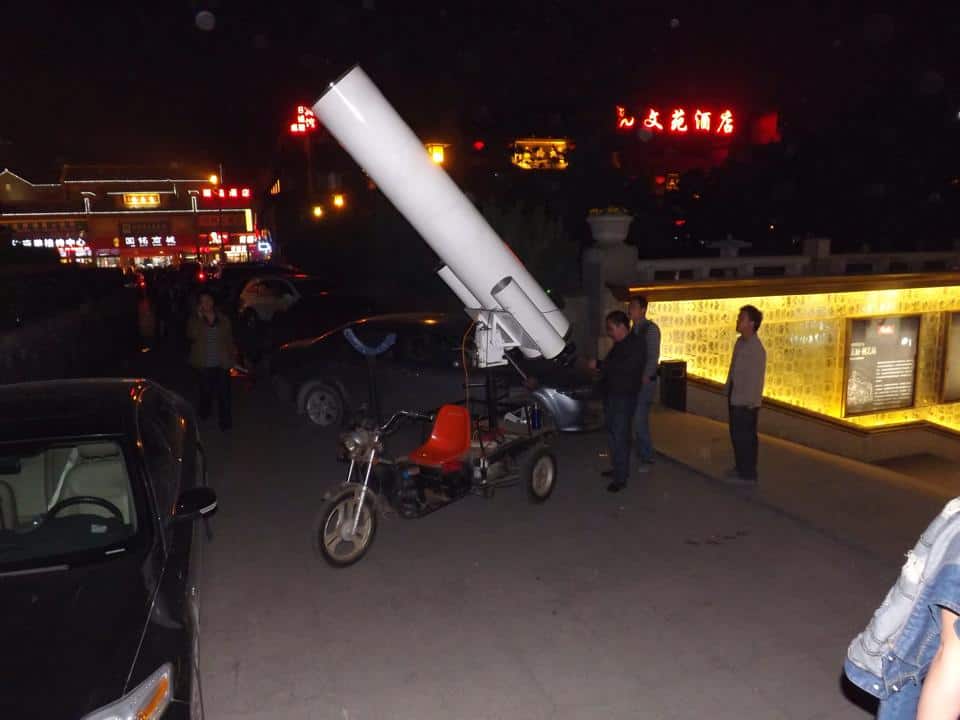
Not something you see everyday – amongst the toys and gadgets there was an enormous telescope on the back of a bike. I’m not sure what they were pointing at because there was ample light pollution, but it was indicative of the “surprise around every corner” sort of chaos of the night markets.
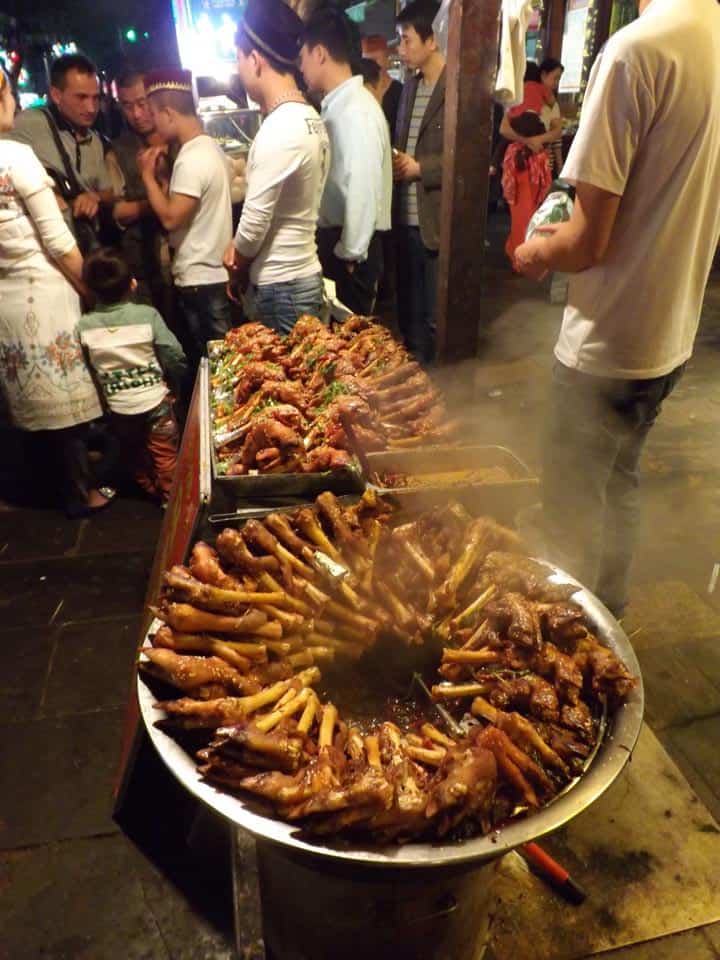
Oh – and we didnt really raise any eyebrows or attract unwanted attention – there were children and families out and about – most of the crowds seemed to be locals and it didn’t feel dangerous – not sure what it would have been like for unaccompanied women, but it was a good vibe.
Day Two: Last day
Our domestic flight was at 2:15, so we needed to get to the airport at 12:15. So if we got up early enough we’d be able to spend an hour, an hour and a half on the walls and still have enough time to get back to the hotel and pack.
We got up early enough and headed to the West gate where we had seen the bike hire shop the previous day. Empty. Not only of other tourists and people in general but also bikes – that particular shop wasn’t open. So, knowing that the wall was a giant ring, we head off towards the South gate and lo, on the Southern wall we found an open bike hire shop.
We looked at the time and did our calculations – and then decided that yes, even though we weren’t the fittest, we’d still be able to make it back in time and so we headed out.

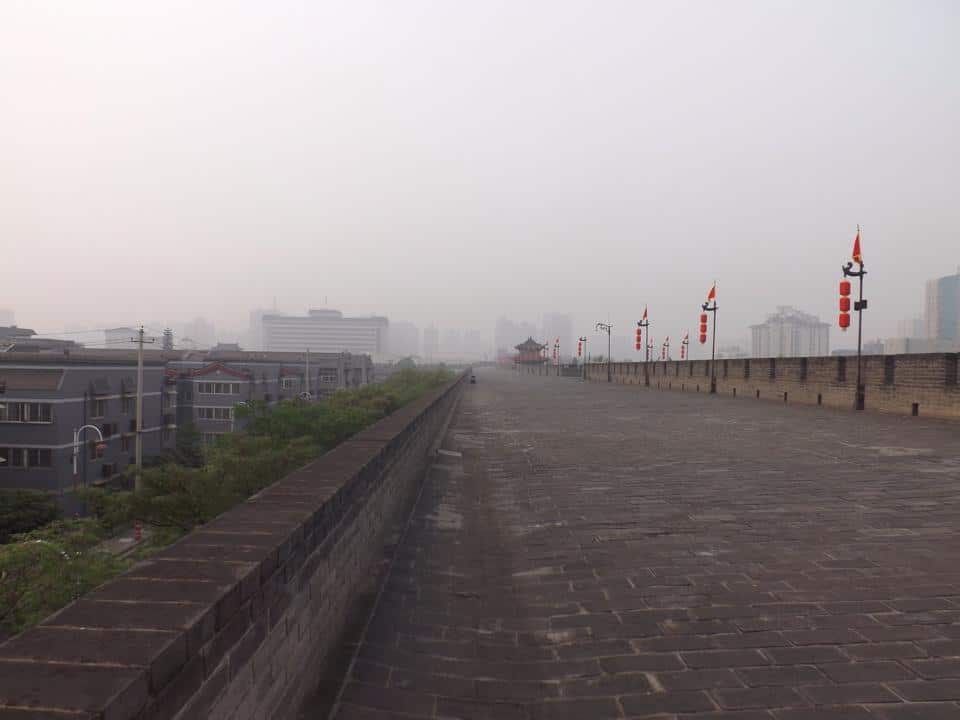
There is a certain magic being the only ones around on something like the City Walls of Xi’an – even with the knowledge that the “fog” obscuring the buildings in the distance is most likely smog. And viewing the residents doing their thing in the public spaces around the wall was a fascinating insight into the pastimes.
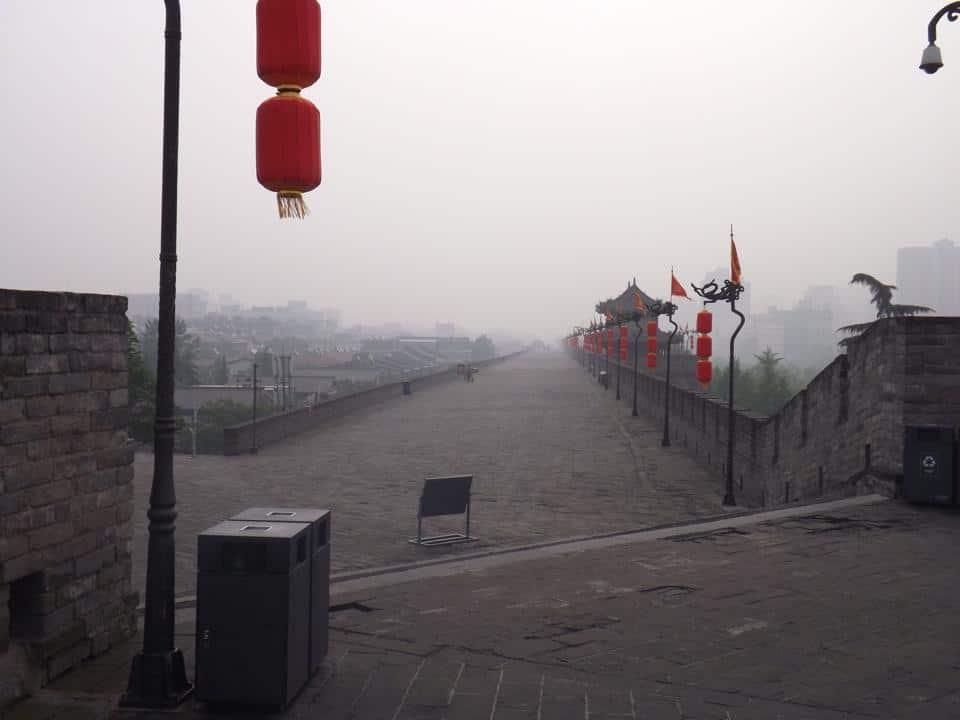
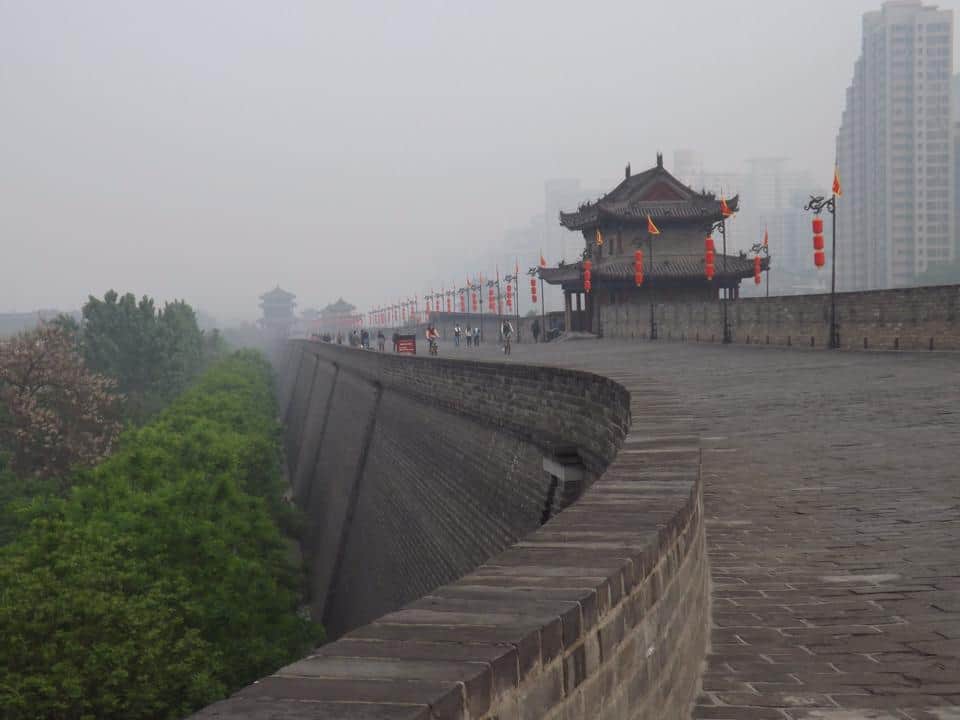
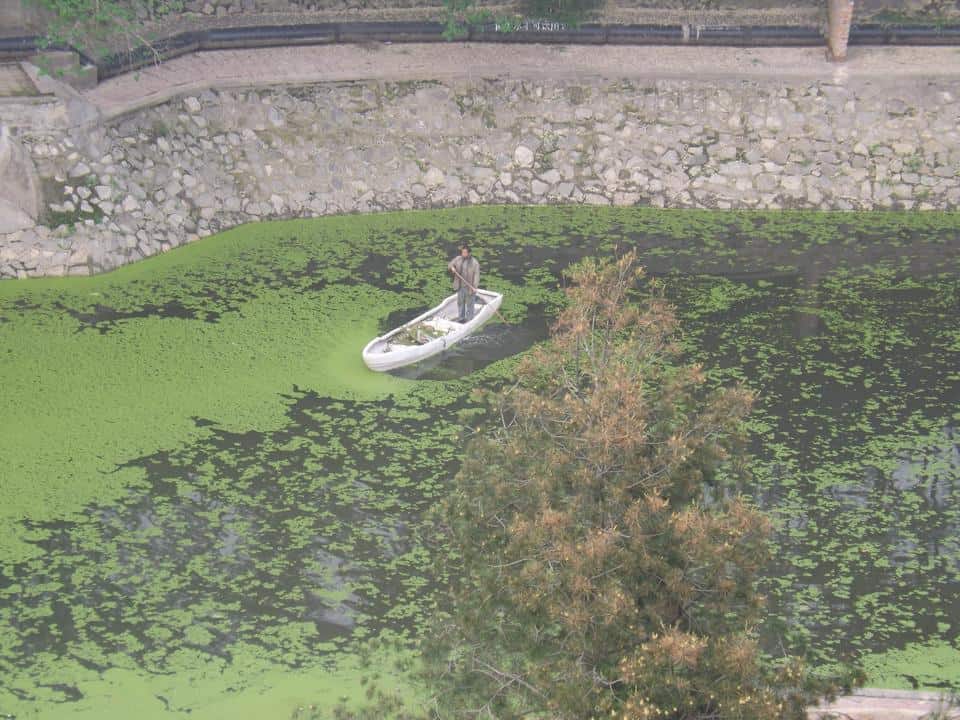

As the sun came out it burnt off the smog and it looked like being a pleasant day. The guy in the boat I think is collecting some sort of plant from the water.
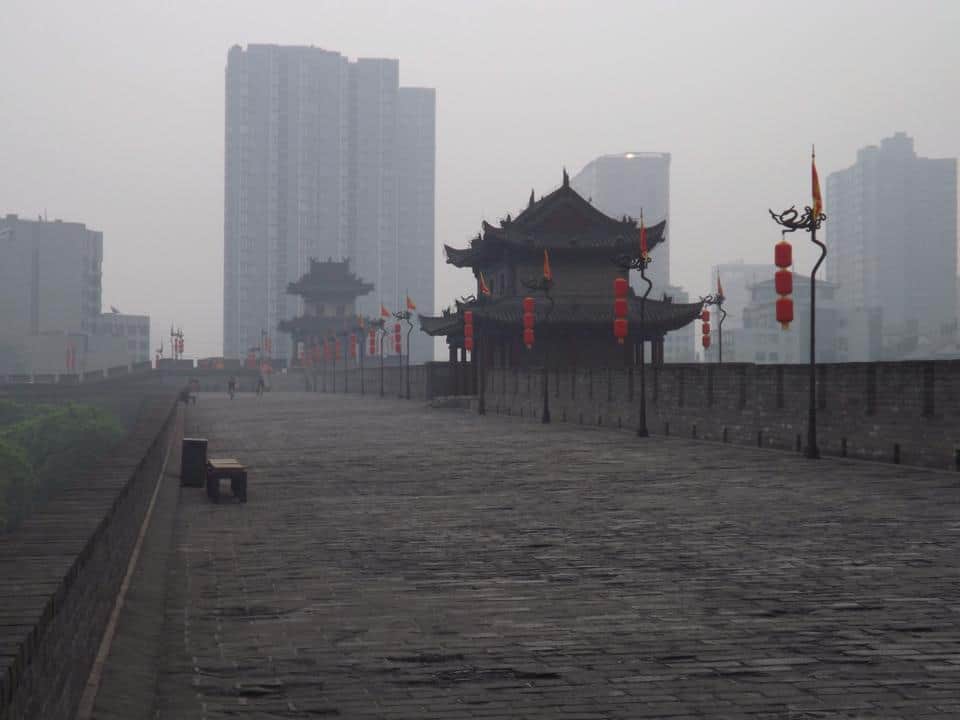
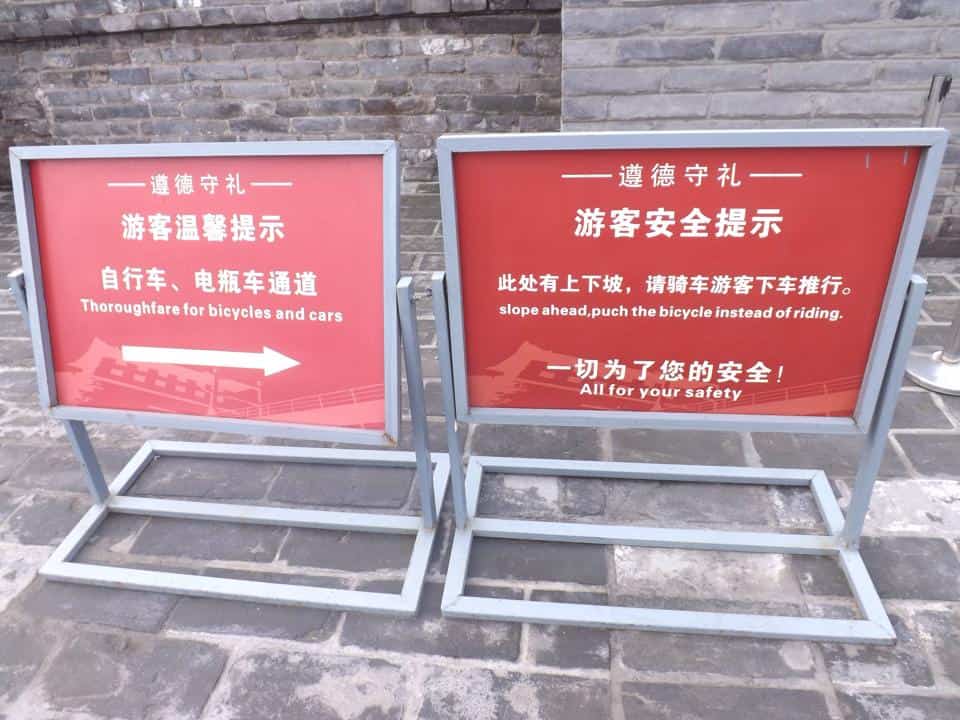
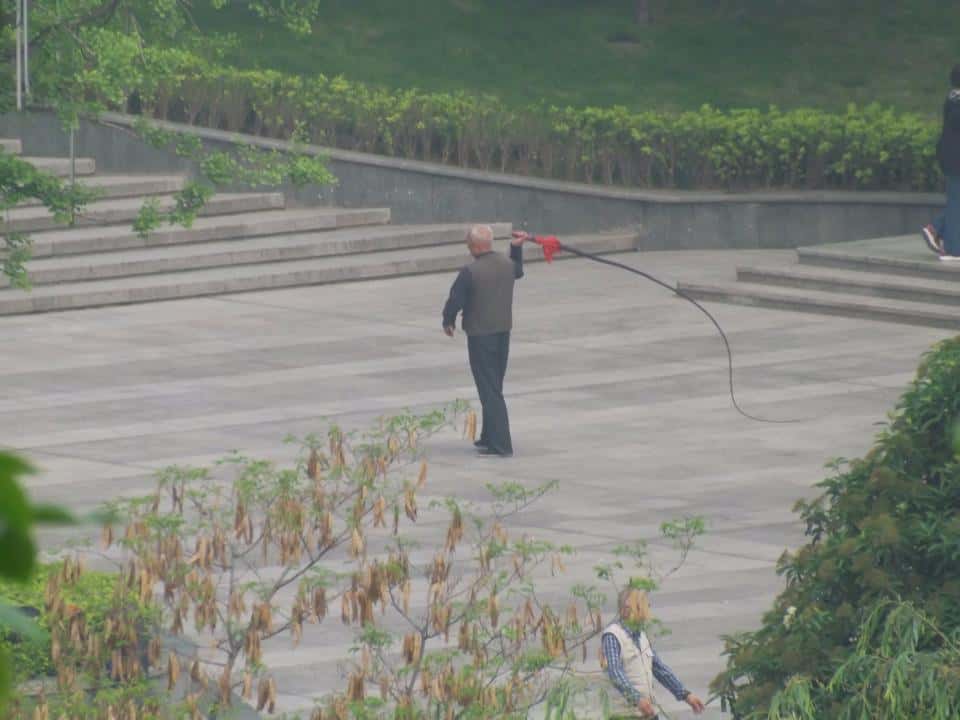
Also in the squares on the banks of the moat were people doing Tai Chi, and people whipping – one with a giant bullwhip (above) and a couple of others with musch smaller whips who would use them to keep tops spinning on the ground. The bullwhip had an awesome crack which echoed off both the city walls and the surrounding buildings.
Would I Go Back?
If I was on a trip to China and someone wanted to go to Xi’an I would be definitely up for that – a couple of days to revisit the Terracotta Army and the City Walls would be great. I’d even add a visit to the Drum Tower and maybe catch the Tomb of Emperor Jingdi Hanyangling. As far as a destination though, it’s a long way to go just for the Terracotta Army…
Previous: Tian’anmen Square & The Forbidden City| Part of Trip: Pollution & Tigers | Next: Shanghai
